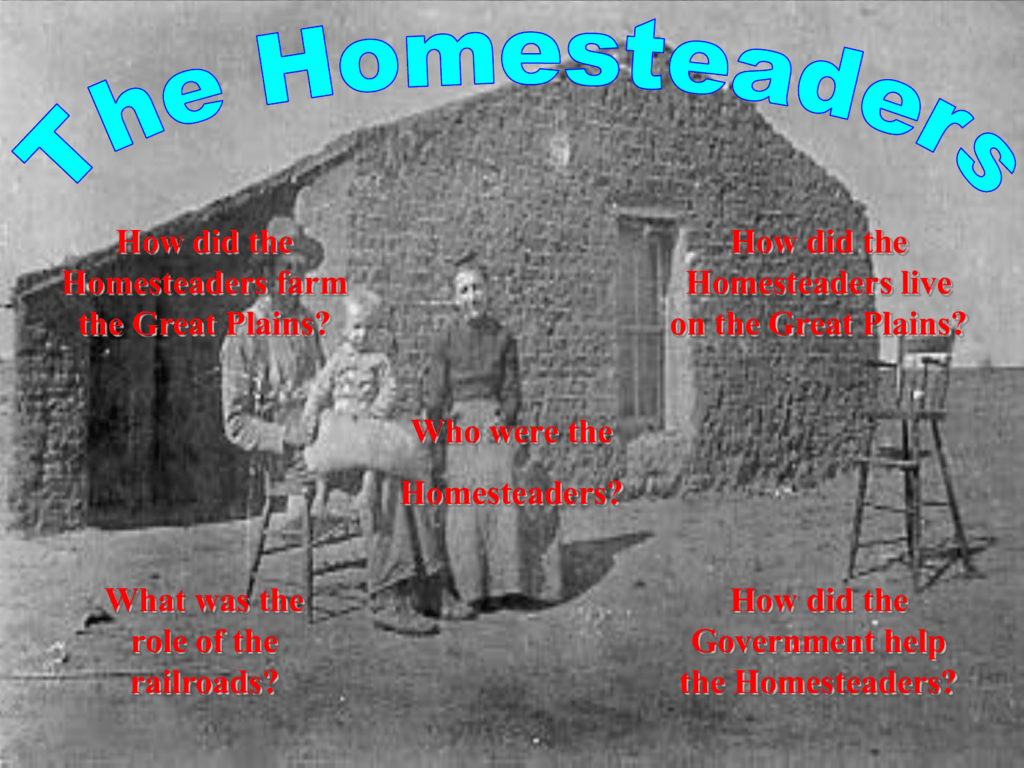Why the Great Plains Was Not Suitable for Homesteading
3 Which Plains are good for growing crops. For that reason early farmers did not depend entirely on the produce of their gardens.
Not only have Edwards Friefeld and Wingo amassed an astonishing amount of big data about homesteadingcharacteristics of land takers who succeeded who failed and whybut they broaden our analytic perspective to include.

. Many of the newcomers were used to living in villages and then walking or riding out to their fields to farm. Great Plains Stephen Long Homestead Act Wheat Belt. Homesteading the Plains reexamines old data and draws from newly available digitized records to reassess the current interpretations four principal tenets.
-Hazards such as prairie fires or locust swarms could destroy entire crops in hours. 5 Why are plains more suitable to agriculture than plateaus. Explain why the Great Plains was not suitable for homesteading.
2 Does the Great Plains have good soil for farming. 15 What caused the Great Plains to have problems quizlet. 8 Why did so many farmers on the Great.
But the Homestead Act required those claiming the land to live on it and the act forced settlers to farm the land in 160-acre plots. More people settled in the Great Plains and tried to force the Native Americans out of it during what was known as the farming frontier. Most homesteaders failed to prove up their claims.
-Some crops planted by Homesteaders were not suited to the climate of the Great Plains. The Plains were hard to live on. Why was the great plains not suitable for homesteading.
The homesteading process was rife with corruption and fraud. Some lower quality plots were cut off from rivers which made irrigation a challenge. 7 What made farming in the plains more effective.
Rather they hunted bison and other game and supplemented their diets with meat and diverse wild plants. It was risky to move out to a homestead without knowing whether the soil would be fertile or the rain would be plentiful that year. Homestead dry farming sodbuster bonanza farm.
Why the Great Plains was not suitable for homesteading. Homesteading also meant living a life of solitude in remote locations across the Great Plains. 16 How did farming in the Great Plains impact settlement in the West.
6 Why the Great Plains was not suitable for homesteading. What factors contributed to the making of the wheat belt in the Great Plains and then to troubled times for wheat farmers in the 1890s. However agriculture in the Great Plains has always been a risky business threatened by drought grasshoppers and early frosts.
Science and Technology How did the need for new farming techniques on the Great Plains result in technological innovations in. The temperatures were very hot in the summer and freezing on the winter. Why was the Great Plains not suitable for farming.
Homesteading the Plains fundamentally alters the dominant frame for understanding the costs and consequences of settling the Great Plains. Homesteading was a minor factor in farm formation with most Western farmers purchasing their land. 14 Why the Great Plains was not suitable for homesteading.
4 Why is corn grown in the Great Plains. In 1862 Congress passed the Homestead Act which encouraged farmers and immigrants to settle in the Great Plains by granting them titles to vast acres of land at a small fee. Good harvest world competition cause a glut that caused prices to drop.
The Homestead act new farming techniques and equipment.

The Homesteaders Needed To Recognize That They Could Not Grow

How Did The Homesteaders Overcome The Problems They Faced On The Great Plains Teaching Resources

Homesteading Dreams And Realities Us History Ii Os Collection
Comments
Post a Comment